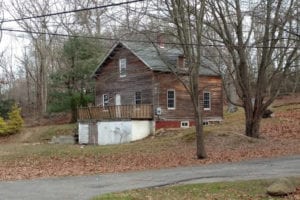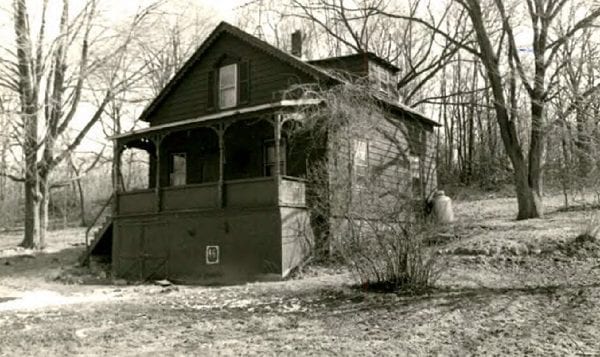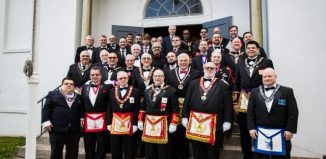Your Turn: Revitalizing History Through Heritage Renewal
Bethel AME Church and Higher Ground prepare to restore historic house
During the past 15 years, initiatives by Higher Ground Intercultural and Heritage Association to increase protection of the district include: obtaining a Town of Brookhaven Landmark citation for Bethel African Methodist Episcopal Church in Setauket; obtaining a districtwide Endangered Site nomination by Preservation League of New York; hosting A Long Time Coming Archaeological Project; starting a benchmark Cultural Resource Survey; and registering the district on state and national registers of historic sites in November 2017. In the same year, the Old Bethel Cemetery, which belongs to Bethel AME Church, was nominated to state and national registers of historic places through the remarkable efforts of Vivian Nicholson Mueller and Simira Tobias.

In a joint collaboration to preserve historic inventory, and to expand the historical significance of the district, Bethel AME and Higher Ground are working together to restore the historic Rev. David and Mary Baker-Eato House, which is located within the historic district.
Research has indicated the house was probably built between 1900 and 1917. Recently, several grants opened a new window of opportunity to Higher Ground that boosted the restoration project. The organization recently received a $1,220 grant award from the Unitarian Universalist Fellowship at Stony Brook; a $3,000 award from New York Landmarks Conservancy which was directed to Bethel AME Church; and a $25,000 grant award from the Gerry Charitable Trust in October 2019.
With this fresh infusion of funds, the joint Eato House restoration project plans to start preliminary activities to build organizational capacity in the spring of this year, followed by planning the first stages of restoration at a later date. With sincere appreciation, Higher Ground acknowledges that the first funding to create and protect the BCALH District, between 2009 to 2015, was made possible by grants awards from The National Center for Suburban Studies at Hofstra University and The Preservation League of New York State.
While there is only little information about the origin and date the Eato House structure was built, the historically significant occupants, the Rev. David Eato and his wife Mary L. Baker-Eato, offer us an alternate view of a portion of American history. Eato was born in August 1854 in Roslyn, where many members of the Eato family remained. He was the fourth of nine children of Peter Eato and Charlotte Corse.
In the early 1840s, before Eato’s birth, his father worked as a sailor on the sloop Andrew Jackson, a merchant vessel that served shore communities in New York and New Jersey. On March 12, 1840, Capt. Jacob M. Kirby listed 21 employees, including “Peter Eato or Etoo.” Captain Kirby paid his employees with some cash but also by bartering such items as watch repair, powder and shot, watermelons, boots and trousers. In later census records, Peter Eato was listed as a laborer or farm laborer. He died of cancer Nov. 19, 1899, age 87.
David Eato was heavily handicapped during his ministry with dropsy (vascular edema). In spite of his disability, he spent his life as pastor of several small AME congregations on Long Island. Beginning in Roslyn, he spent much of his service at Mt. Olive AME Church in Elmhurst, where he dedicated a new church worth $9,000 Thanksgiving Day, 1907. In 1906, he also served the Union AME Church (later St. Mark) in Jackson Heights. In 1908, he moved to the Mount Olive AME Church in Mount (Port) Washington. He may have served both the Port Washington Church and the Setauket Church simultaneously, since there is a note about his work in Setauket in 1911 and another reference to his work as a pastor at Port Washington in 1913.
Around 1915-16, he moved to Setauket with his second wife Mary Lucinda Baker-Eato. In Port Washington June 29, 1913, Eato married Mary, who played piano and organ at the Mount Olive AME Church.
Baker-Eato was born in 1868 in South Carolina, the daughter of Oliver Baker and Catharine Buite-Baker. Catharine Baker (called Grandma Kitty by her family) was born on the Baker plantation in Troy, South Carolina. It is presumed Mary Lucinda Baker, Catherine’s only known child, was born on the Baker plantation.
Baker-Eato graduated from Allen University in Colombia, South Carolina. Allen University was established by the African Methodist Episcopal Church in Cokesbury, South Carolina, in 1870, and later moved to Columbia. She may have majored in music, since she later taught piano and organ. While she was still living in Troy, she married Robert Wydeman. Together, they had five daughters, Jessie, Katie, Josephine, Mary Louise and Frances. In 1901, Baker-Eato, her five daughters and Grandma Kitty all moved north to Port Washington. Eato-Baker worked as a cook (perhaps in a restaurant), gave music lessons, and played piano and organ in the Port Washington AME Church.
After the Eatos married in 1913, they were still living in Elmhurst in 1915 (according to the New York State census), taking care of one of her daughters from her first marriage, Katie Weidman, and granddaughter Helen Coleman. By 1917, they were living in Setauket, where the Hyde map listed David Eato’s name beside the Eato house. In 1920, the census noted that the Eato family rented a house on Locust Avenue, where they lived with Baker-Eato’s grandchildren Helen Coleman, 11, and Adolph Blake, 3.
In 1925, the census recorded David Eato, age 70, living with his wife Mary Eato, age 57; Arthur T. Blake, age 15; and Adolph J. Blake, age 8. Mary Eato bought the Eato house from R.W. Hawkins and Carrie Hawkins in 1928 and became one of several African American women who owned homes in this area.
In 1930, David Eato was not listed in the census. Mostly likely he died between 1925 and 1928, when Mary Eato purchased this house. Although sources of information about the reverend and his wife reveal the life of two individuals who left a vision and hope for their descendants, their lives are representative of the many thousands of African Americans who survived slavery in America and made their way to Long Island.
Those other lives, not recorded, represent stories lost and gone forever because of the erection and maintenance of an ages old framework of historical narrative largely unchanged in America, since the end of the 19th century. It is as though revelations of Native American and Afro-American history, their history in the Americas and throughout the world, have been intentionally buried.
Today, we are learning that a significant portion of the history of Afro-Americans in America is being revealed through scientific research and recent archaeological and anthropological discoveries. In recent years public activism, local and national preservation organizations and state and federal legislation have acted to conduct new research; to render a revised and more complete history of Afro-Americans, and fully integrate it into a more inclusive history of America. At the present time, a new coalition of 21st-century researchers have been on the forefront to revise this forgotten history, as opposed to educators and scientists that pandered to biased academia from the 17th century, lasting through most of the 20th century.
There is ample evidence that there are hundreds of Afro-American cultural sites with similar stories, such as the Eatos and their home on Christian Avenue, that give the viewer an opportunity to see history differently. When descriptions of the structure, site and occupants of historic cultural origin are joined together, they become a comprehensive story in stark revelation. They become a doorway — an entryway to the truth of a cultural legacy connected to an ancient time, 3,000 years ago. However, the complex paradigm of intractable narratives of American history that remain as a pedagogy, since post-Civil War Reconstruction is a gate still standing; gradually being broken down by people who want to know the truth.
We can begin at the gate by saying: “Christopher Columbus (Cristoforo Colombo) did not discover the Americas.” From that observation, we are thus able to see misconceptions in the cultural and racial dynamics of history; to posit arguments against the old theories; engage in conversations that realize there is an imperative to rewrite a significant portion of American history. The huge number of obscured Afro-American communities, such as the Bethel Christian Avenue, Laurel Hill Historic District, their historic inventory and structures such as the Eato House have enormous importance, not only to America’s history, but that they are integral toward a revision that transmits truth into our education systems.
Robert Lewis is the president of Higher Ground Intercultural and Heritage Association.







